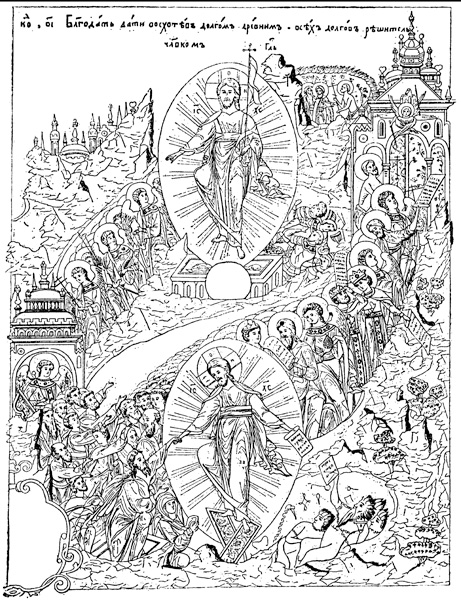Image Details

From R. Lange, Die Auferstehung
Jesus rips the cheirograph from the clutches of the devil, as he liberates Adam and other Old Testament heroes from Hell, in the bottom scene of this drawing of a 17th-century Russian icon. According to church tradition, immediately before Jesus’ Resurrection (the top scene), he descended to Hell to release the righteous imprisoned there.
Not only does Jesus makes things right for humanity by offering salvation from the Fall, he uses his opportunity in Hell to annul the cheirograph, undoing Adam’s second transgression. Paul himself may have known about the cheirograph, as the following quotation from Colossians suggests: “And though we were dead in our transgressions and in the circumcision of our flesh, he has made us alive with him, forgiving us of all our sins. He has cancelled the contract (cheirographos) and all its stipulations which were laid upon us, and he has set it aside, nailing it to the cross” (Colossians 2:13–14).
Jesus’ trip to Hell to liberate the righteous dead has always been a popular scene in the art of the Eastern church, where it is called the Anastasis. (In the West, it is known as the Harrowing of Hell.) Jesus is often shown holding a scroll—apparently a copy of Adam’s contract—as in the modern Anastasis painting on the cover of this issue.
